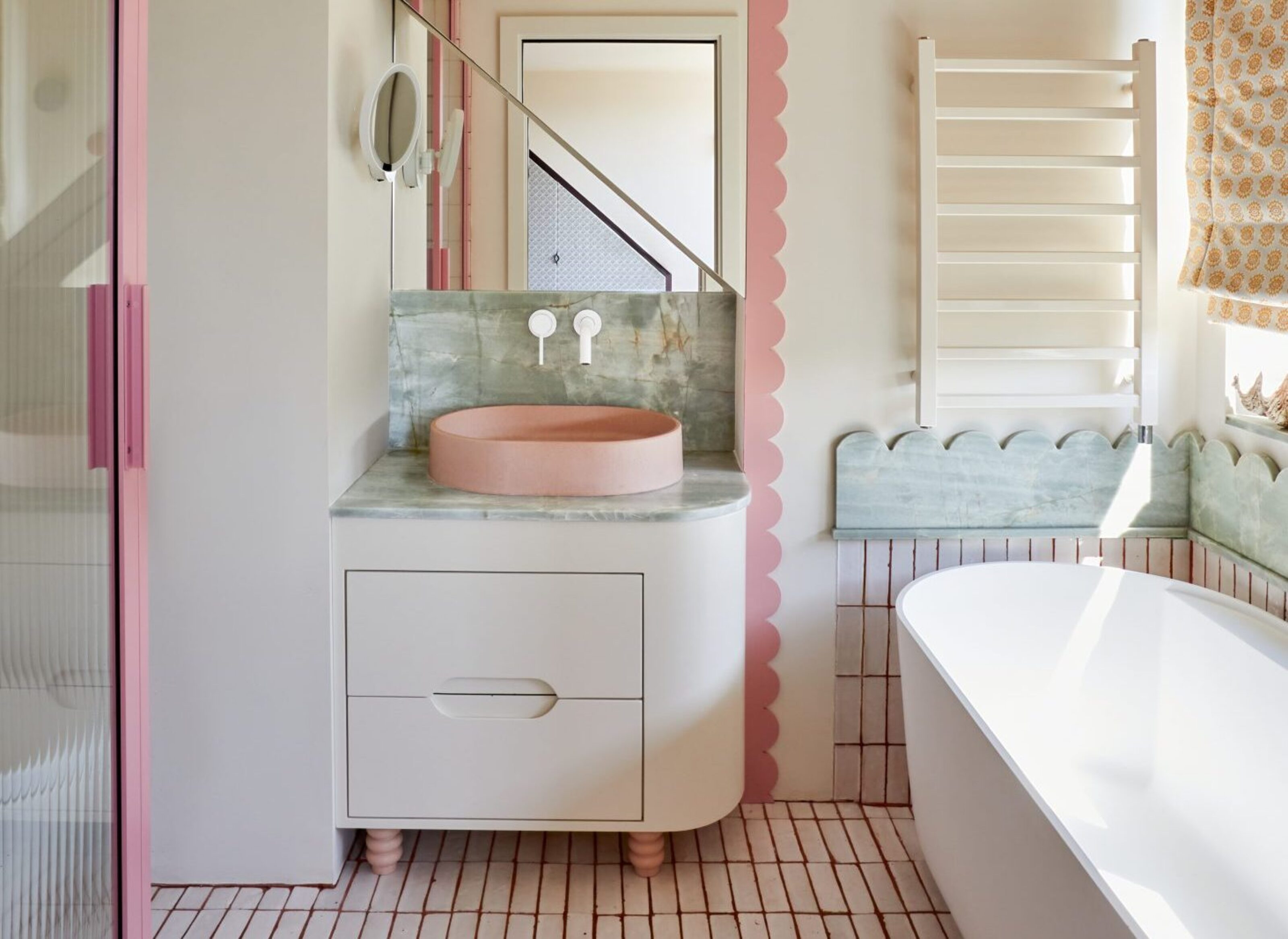
Designing a bathroom for kids that is safe, practical and encourages independence requires careful consideration on quite a few different levels.
From safety features to bold colors and patterns and practical storage solutions that will ease your day-to-day routines, whether you’re renovating an existing famly bathroom or starting from scratch with a new kids bathroom, these expert tips will steer you in the right direction for creating the perfect environment to grow with your children.
1. Safety
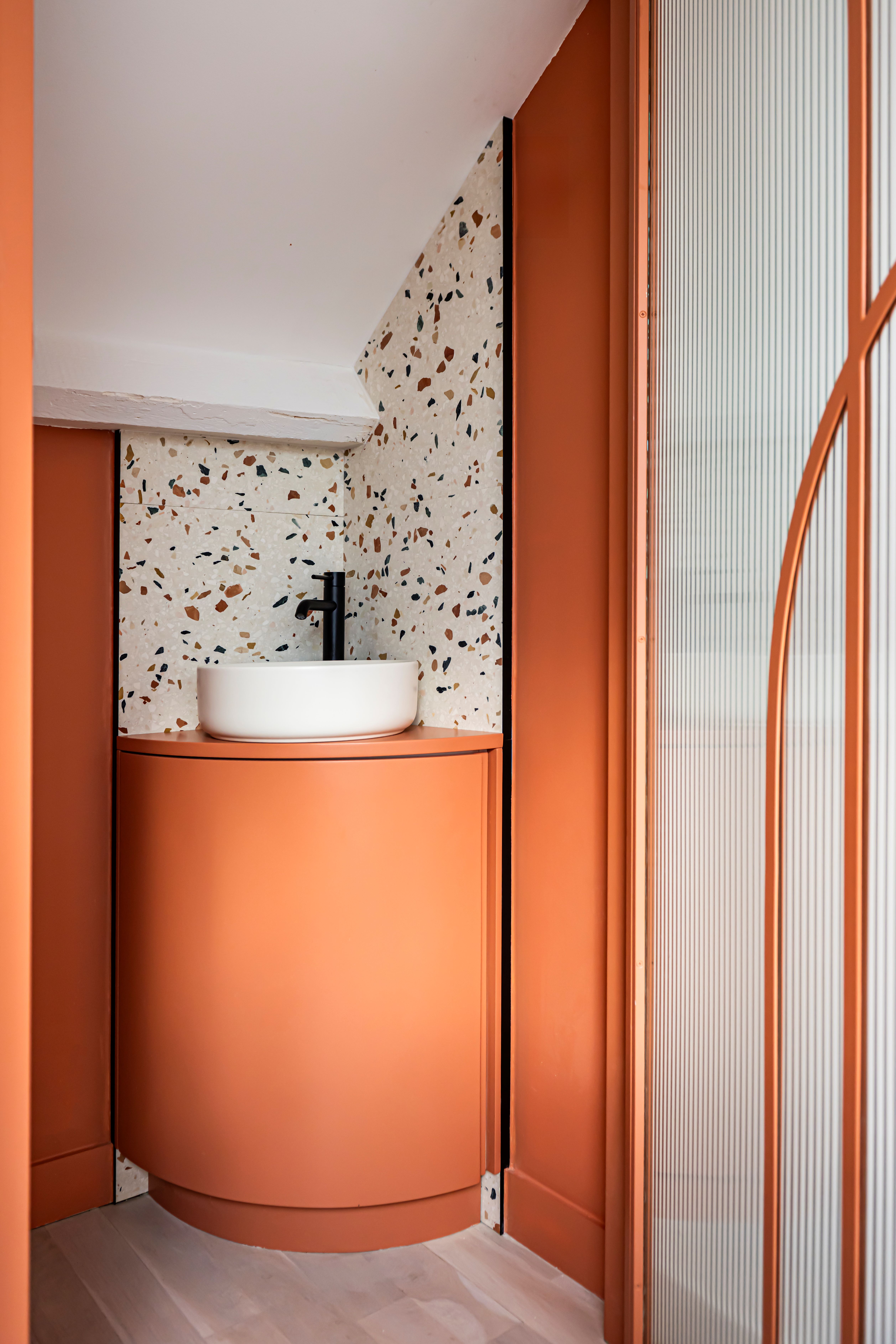
When designing a kid-friendly bathroom, safety should always be your top priority. Depending on the ages you are accommodating, you may like to adjust the level you go to but they are all very much worthy of consideration while making these all-important design decisions.
To begin, ‘Installing non-slip flooring will prevent slips and falls, and consider adding grab bars near the bathtub and toilet for added security,’ recommends Nina Lichtenstein, Founder of Nina Lichtenstein Custom Home Design. She continues, ‘Use soft-close toilet seats and cabinet doors to prevent little fingers from getting pinched.’ Also, be sure to keep all electrical outlets covered and store hazardous items like cleaning supplies out of reach. 'I like to adjust the thermostat to avoid scorching hot water too,’ says interior designer Kim Colwell. ‘For toddlers, every inch needs to be secured — from the outlets, doors and tubs — so that you can feel confident that your child's bathroom is secure.’
Opt for round edges where possible on pieces like the vanity unit and bathroom vanity countertop, along with round cabinet handles and a sturdy step stool so your child can safely reach the sink and faucet.
Price: $39.99
For a smart way to child-proof a bathroom cabinet, why not add this no-drill smart lock to your doors. It can be operated by phone app, smart watch and set to use NFC technology, as well as a manual override with a key card.
2. Lighting
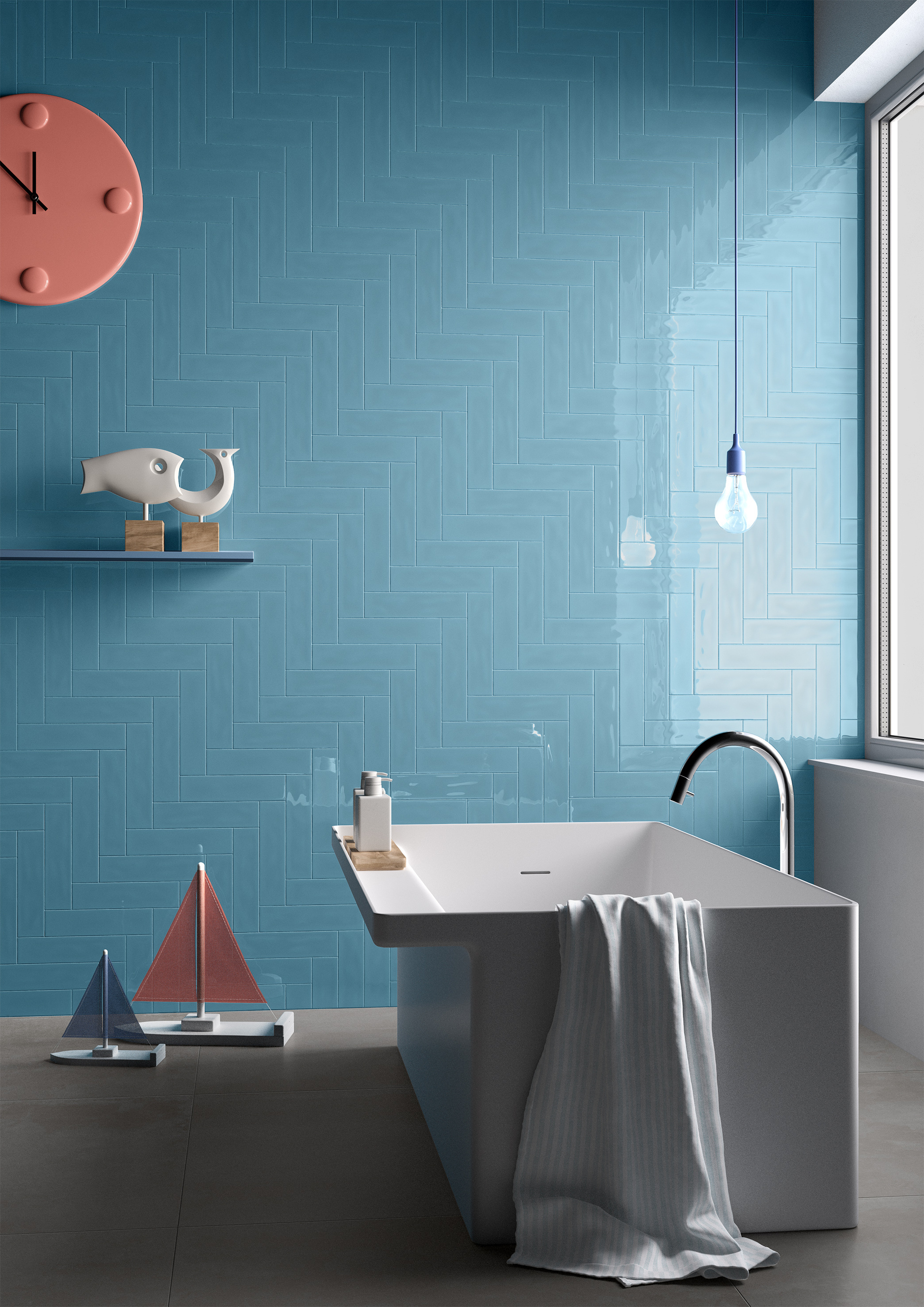
Don’t underestimate the importance of bathroom lighting for a kid-friendly bathroom. Think bright lights for task lighting, and a low lit light for night time bathrooms visits. Perry Walter, founder of Walter Studio Interior Design suggests dimmer switches, allowing you to adjust the light level for a more calming bedtime routine. Kim recommends keeping a light on at all times, 'A small low-voltage table lamp in the shape of their favorite animal or character sets the tone and avoids mishaps in the dark.'
Price: $19.99
With adjustable color temperatures, you can keep light tones warm to avoid stark nightlights that will jolt you awake when using the bathroom in the night.
3. Design in longevity
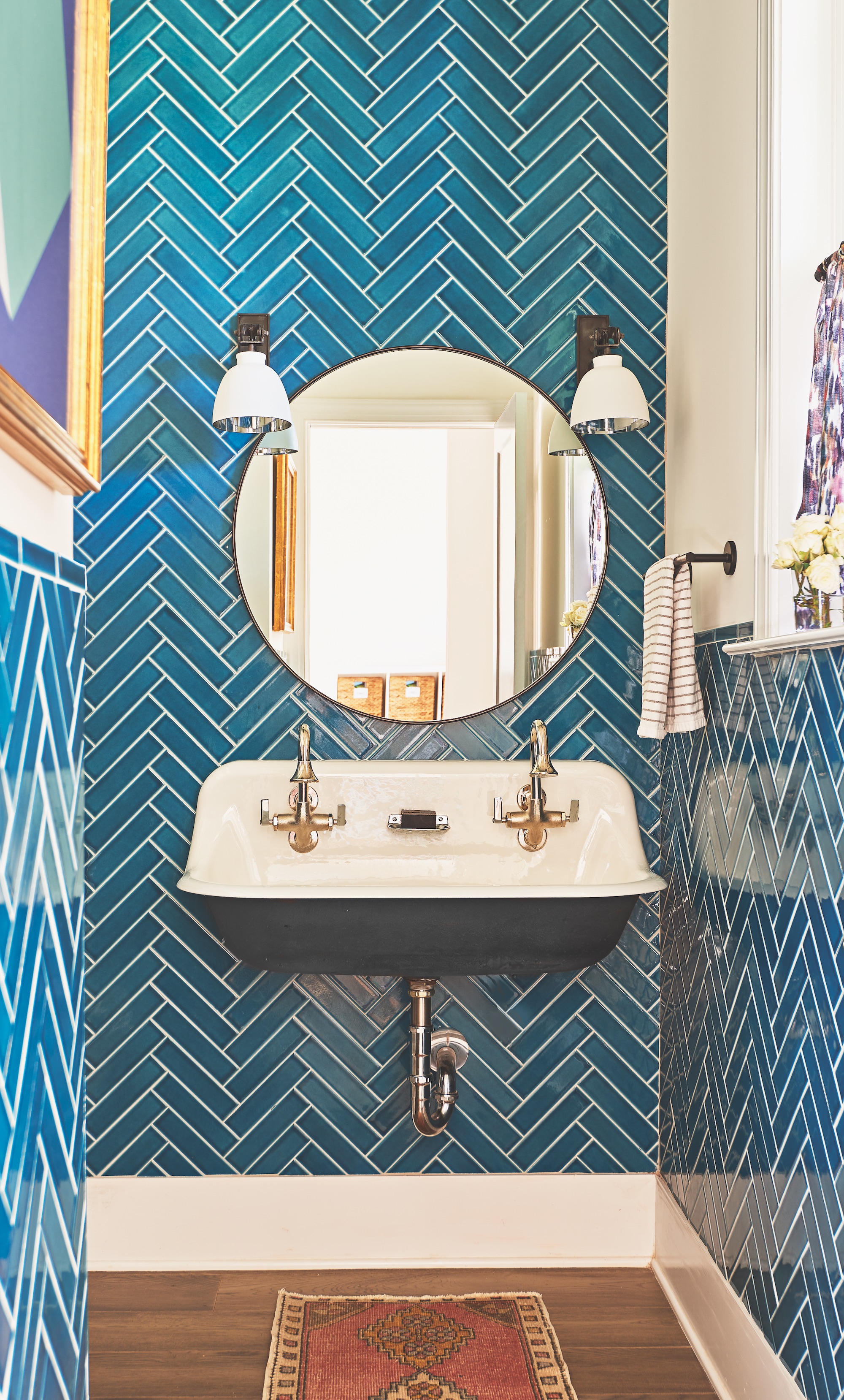
A kid's bathroom has to be able to grow and eventually elevate itself into a teen’s space, while sometimes serving as an occasional guest space. Opting for a neutral palette on the built in furniture, walls and other finishes from the beginning allows you a timeless base to layer and style accordingly, meaning updates are easy to make when you feel the time is right.
Updates can be made in all sorts of ways: ‘Bathroom accessories, art and even lighting are the perfect opportunity to highlight an exclusively youthful spirit,’ says Noel Gatts, HGTV Host & Owner of beam&bloom, think bath mats, towels, artwork and step stools to inject color and pattern – it’s the perfect way to tailor to your child’s interests and keep it current.
‘Add pops of color through features such as a colorful vanity or playful shower curtain. Incorporate themed decals or wall art to make the space more inviting and personalized for kids,’ suggests Nina. The beauty is that it can be easily changed as the child matures and their tastes evolve. However, if you want to go wild with a color or two, I say go for it. Let's face it, when will you have the chance to be playful like this again and it not seem so scary?
Price: $58.60
This fun shower curtain works just as well for a kids bathroom as a more joyful grown up space.
4. Storage solutions
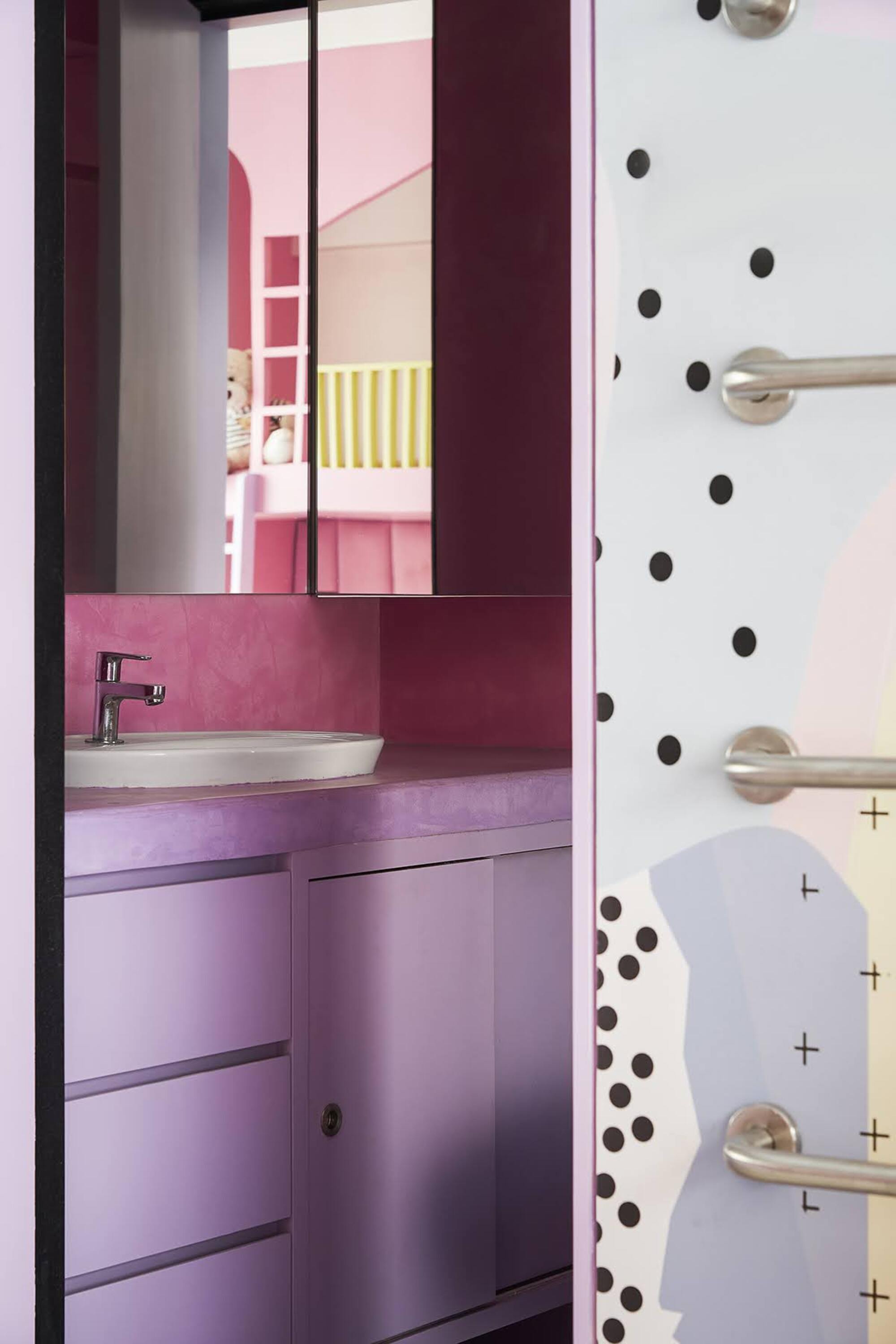
Bathroom storage is key for any space, but a family bathroom will hold extra things needed from newborn to teen. ‘Floor storage baskets are great for towels, toys and keeping things tidy and accessible for little hands, whereas built-in compartments or hidden bins within the vanity cabinet can help keep essentials organized and out of sight,’ says Perry.
5. Easy cleaning

If you take your time in considering easy-clean surfaces at the beginning it will save you a lot of time and effort in the long run. Nina suggests opting for wipeable paint finishes on walls and cabinets and consider installing a shower enclosure with smooth surfaces to simplify cleaning.
Kim Colwell recommends having less grout between the tiles: ‘This means selecting a tile that you can do a tight joint on (keeping the tiles as close together as possible to minimize the grout). The easiest finish to clean is glazed ceramic tile,’ she says.
Liz Goldberg, founder and creative director of Carolynleona admits: ‘While we are big fans of honed marble countertops, we like to use quartz or quartzite in kids’ bathrooms to have stain-free counters that are easy to keep clean as they are non-porous and stain resistant. This is also a space to have some fun, pull in an unexpected color, or add a whimsical tile color or installation pattern to bring this space to life!’ Including a handheld shower head is a top tip to make rinsing, bathing and maintaining the shower enclosure a total breeze.
6. Within reach
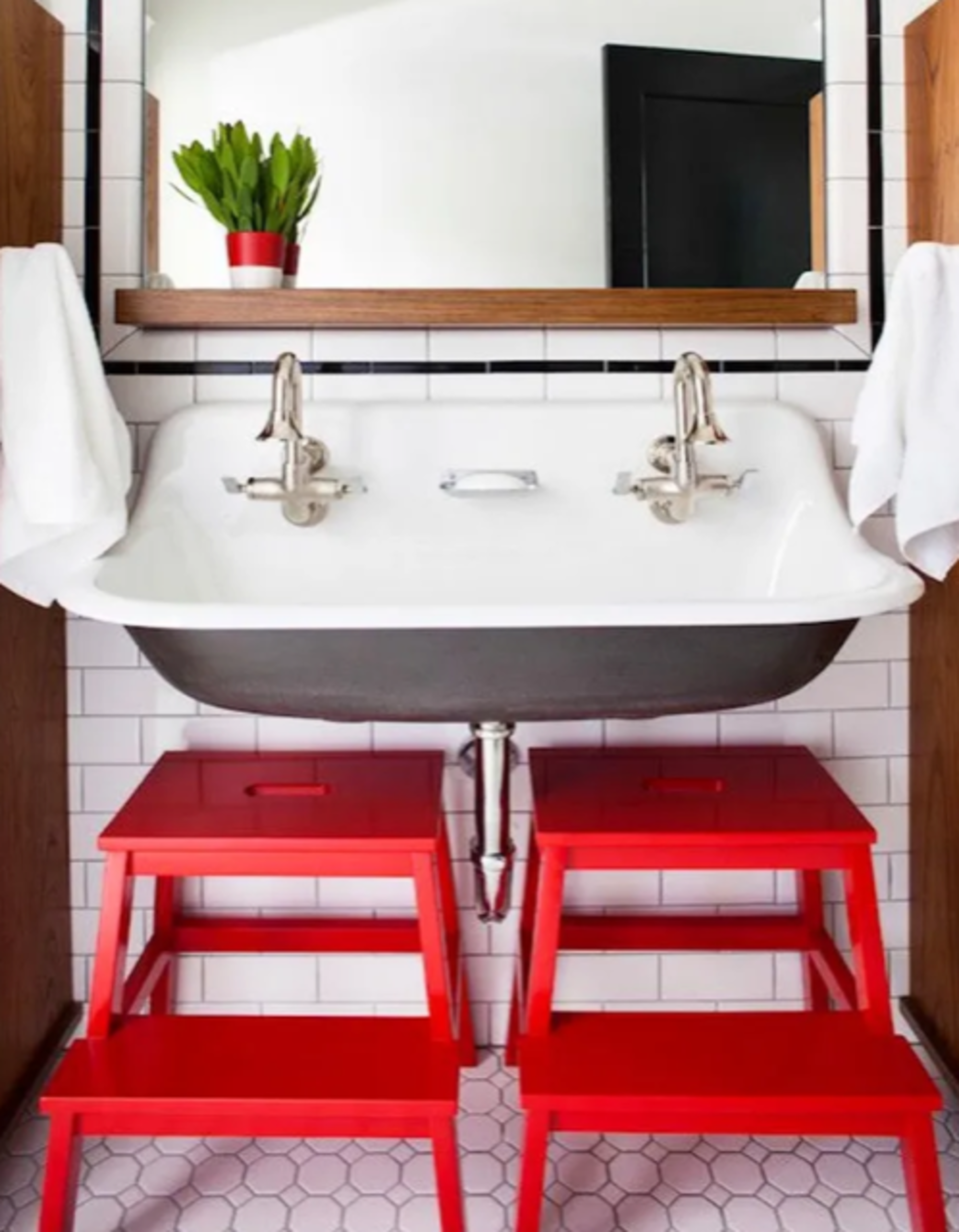
Having things within reach is an important part of growing up and gaining independence for the little ones, for example installing low level towel hooks as well as a high. It’s a good idea to keep things like toothpaste and toothbrushes out of reach when very young, but once you feel it’s time, move them to an area in reach to encourage excitement through independence for these daily routines.
If you have more than one child, double sinks can be the ideal solution. After all, when very young, company while brushing your teeth makes it all that much more fun, and once they’re older it will hopefully save time and arguments from having to wait until the other has finished in the bathroom.
Price: $179
This might be the chicest step stool we've found if you want to make it easy for younger children to reach the bathroom sink.
These are all crucial elements to at least consider and ensure you have the appropriate requirements covered. There’s no doubt by incorporating these design factors and reflecting on any design concerns, you will be able to create a fully functioning child friendly bathroom. All while having confidence in it being a safe space for your little ones to learn as they grow, and feel comfortable in their independence and daily routines. Nina reminds us, ‘Remember to involve your child in the design process to make the space feel truly personalized and enjoyable. With thoughtful planning and attention to detail, your kid-friendly bathroom will become a favorite spot for both kids and parents alike.’







